Related Research Articles

Francis Scott Key was an American lawyer, author, and amateur poet from Frederick, Maryland, who wrote the lyrics for the American national anthem "The Star-Spangled Banner". Key observed the British bombardment of Fort McHenry in 1814 during the War of 1812. He was inspired upon seeing the American flag still flying over the fort at dawn and wrote the poem "Defence of Fort M'Henry"; it was published within a week with the suggested tune of the popular song "To Anacreon in Heaven". The song with Key's lyrics became known as "The Star-Spangled Banner" and slowly gained in popularity as an unofficial anthem, finally achieving official status more than a century later under President Herbert Hoover as the national anthem.
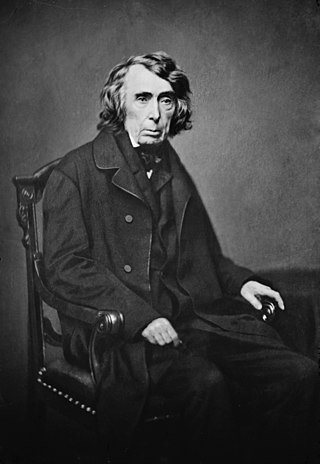
Ex parte Merryman, 17 F. Cas. 144 (No. 9487), was a controversial U.S. federal court case that arose out of the American Civil War. It was a test of the authority of the President to suspend "the privilege of the writ of habeas corpus" under the Constitution's Suspension Clause, when Congress was in recess and therefore unavailable to do so itself. More generally, the case raised questions about the ability of the executive branch to decline enforcement of judicial decisions when the executive believes them to be erroneous and harmful to its own legal powers.
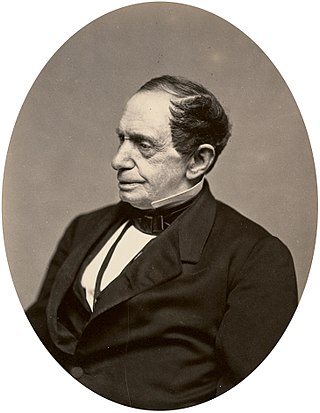
Johns Hopkins was an American merchant, investor, and philanthropist. Born on a plantation, he left his home to start a career at the age of 17, and settled in Baltimore, Maryland, where he remained for most of his life.
Jayson Thomas Blair is an American former journalist who worked for The New York Times. He resigned from the newspaper in May 2003 in the wake of the discovery of fabrication and plagiarism in his stories.

The Baltimore Sun is the largest general-circulation daily newspaper based in the U.S. state of Maryland and provides coverage of local and regional news, events, issues, people, and industries.
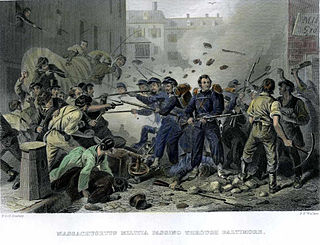
The Baltimore riot of 1861 was a civil conflict on Friday, April 19, 1861, on Pratt Street, in Baltimore, Maryland. It occurred between antiwar "Copperhead" Democrats and other Southern/Confederate sympathizers on one side, and on the other, members of Massachusetts and Pennsylvania state militia regiments en route to the national capital at Washington who had been called up for federal service. The fighting began at the President Street Station, spreading throughout President Street and subsequently to Howard Street, where it ended at the Camden Street Station. The riot produced the first deaths by hostile action in the American Civil War and is often called the "first bloodshed of the Civil War".

"Maryland, My Maryland" was the state song of the U.S. state of Maryland from 1939 until 2021. The song is set to the melody of "Lauriger Horatius" — the same tune "O Tannenbaum" was taken from. The lyrics are from a nine-stanza poem written by James Ryder Randall (1839–1908) in 1861. The state's general assembly adopted "Maryland, My Maryland" as the state song on April 29, 1939.

During the American Civil War (1861–1865), Maryland, a slave state, was one of the border states, straddling the South and North. Despite some popular support for the cause of the Confederate States of America, Maryland did not secede during the Civil War. Governor Thomas H. Hicks, despite his early sympathies for the South, helped prevent the state from seceding.
The American Civil War bibliography comprises books that deal in large part with the American Civil War. There are over 60,000 books on the war, with more appearing each month. Authors James Lincoln Collier and Christopher Collier stated in 2012, "No event in American history has been so thoroughly studied, not merely by historians, but by tens of thousands of other Americans who have made the war their hobby. Perhaps a hundred thousand books have been published about the Civil War."

George Proctor Kane was an American politician and policeman. He is best known for his role as Marshal of Police during the Baltimore riot of 1861 and his subsequent imprisonment at Fort McHenry and Fort Warren without the benefit of habeas corpus. His position as Marshal of Police and his southern sympathies were two of many factors in Abraham Lincoln's decision in February 1861 to pass through Baltimore surreptitiously on his way to Washington to be inaugurated, in order to avoid a possible assassination attempt. Despite his politics, Kane was instrumental in providing protection and an escort for Mary Todd Lincoln on her arrival in Baltimore in February 1861 on her way to the inauguration of her husband, who had preceded her.
The Baltimore Plot was a conspiracy in late February 1861 to assassinate President-elect Abraham Lincoln en route to his inauguration. Allan Pinkerton, founder of the Pinkerton National Detective Agency, played a key role by managing Lincoln's security throughout the journey. Though scholars debate whether or not the threat was real, clearly Lincoln and his advisors believed that there was a threat and took actions to ensure his safe passage through Baltimore, Maryland.
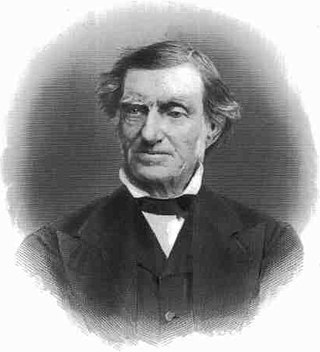
Thomas Kelso was an Irish-American philanthropist and businessman, who was born in Clones, a market town in the north of Ireland, August 28, 1784. He died on the morning of July 26, 1878 at his home of many years on East Baltimore Street in Baltimore, Maryland, at the age of 94.

George Hume Steuart (1790–1867) was a United States general who fought during the War of 1812, and later joined the Confederate States of America during the Civil War. His military career began in 1814 when, as a captain, he raised a company of Maryland volunteers, leading them at both the Battle of Bladensberg and the Battle of North Point, where he was wounded. After the war he rose to become major general and commander-in-chief of the First Light Division, Maryland Militia.
Der Baltimore Wecker was a daily paper published in the German language in Baltimore, Maryland. It was the object of violence in the civil unrest at Baltimore in April 1861 that produced the first bloodshed of the American Civil War.

Annapolis Junction is an unincorporated community in Howard and Anne Arundel counties, Maryland, United States.
Frank Key Howard was the grandson of Francis Scott Key and Revolutionary War colonel John Eager Howard. Howard was the editor of the Daily Exchange, a Baltimore newspaper sympathetic to the Confederacy. He was arrested without a warrant just after midnight on September 13, 1861 at his home by U.S. Major General Nathaniel Prentice Banks on the direct orders of General George B. McClellan enforcing the policy of President Abraham Lincoln. The basis for his arrest was for writing a critical editorial in his newspaper of Lincoln's suspension of the writ of habeas corpus, and criticizing the fact that the Lincoln administration had declared martial law in Baltimore and imprisoned without charge George William Brown, the mayor of Baltimore, sitting U.S. Congressman Henry May, all the police commissioners of Baltimore, and the entire city council. Lincoln's suspension of habeas corpus in Maryland had already been declared unconstitutional by U.S. Supreme Court Chief Justice Roger Taney in Ex parte Merryman, but Lincoln had ignored the federal court ruling. Howard was initially confined to Fort McHenry, the same fort his grandfather Francis Scott Key saw withstand a British bombardment during the War of 1812, which inspired him to write "The Star-Spangled Banner", which would become the national anthem of the United States of America. He was then transferred first to Fort Lafayette in Lower New York Bay off the coast of Brooklyn, then Fort Warren in Boston.
Captain William Andrew Winder was a U.S. Army Commanding Officer of Fort Alcatraz (1861–64).
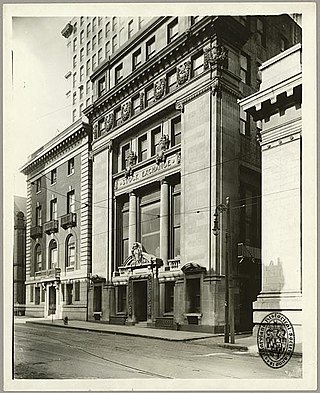
The Baltimore Stock Exchange was a regional stock exchange based in Baltimore, Maryland. Opened prior to 1881, The exchange's building was destroyed by the Great Baltimore Fire of 1904, and was then located at 210 East Redwood Street in Baltimore's old financial district. In 1918, the exchange had 87 members, with six or seven members at the time serving the United States in World War I. The Baltimore Stock Exchange was acquired by the Philadelphia Stock Exchange in 1949, becoming the Philadelphia-Baltimore Stock Exchange. The Baltimore Stock Exchange Building was sold and renamed the Totman Building.

Fort Marshall was a historical American coastal four-point bastion fort located in what is now the Highlandtown and Canton neighborhoods of Baltimore, Maryland. It was built at the outset the American Civil War in 1861, to protect the eastern approaches of Baltimore from Confederate attacks. The fort remained garrisoned for the duration of the war. After 1866, the fort's buildings were salvaged for other purposes and the area ultimately became the site of the Sacred Heart of Jesus Roman Catholic Church, surrounded by the developing residential neighborhoods of southeast Baltimore.

The 1861 Maryland gubernatorial election took place on November 6, 1861. It was held amid the early phases of the American Civil War and was contested between the Unionist Party's Augustus Bradford and the Democratic Party's Benjamin Chew Howard. Bradford supported the maintenance of the Union while Howard advocated for a peace treaty with the Confederacy. Concerned about pro-secession elements in the state, the federal government sent troops to supervise the vote and ordered electors to take an oath of loyalty to the Union. The election was won by Bradford with 68.8% of the votes.
References
- ↑ "The Handeuff Story". The New York Times . New York City, New York. August 12, 1861. Retrieved March 27, 2017.
- ↑ "The Designs of the Rebels Upon Washington". The New York Times . New York City, New York. August 21, 1861. Retrieved March 27, 2017.
- ↑ "Another Defeat". The New York Times . New York City, New York. August 28, 1861. Retrieved March 27, 2017.